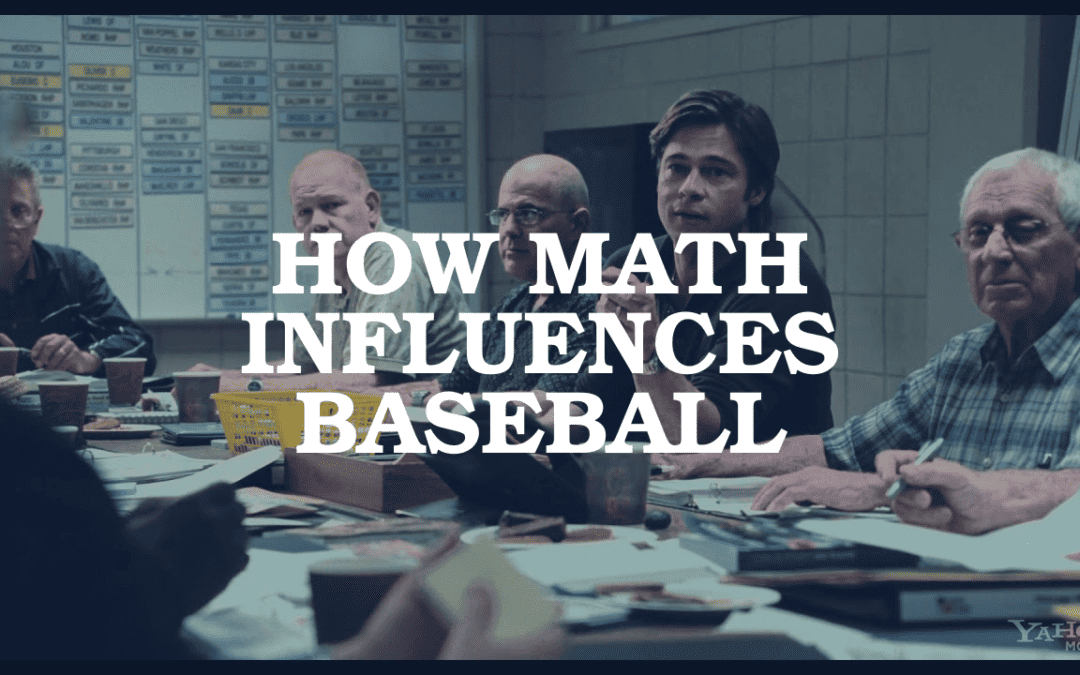Mathematics plays a crucial role in the game of baseball, influencing everything from player performance and strategy to statistical analysis and player evaluation. From geometry and physics to statistics and probabilities, the sport of baseball is rich in mathematical references and applications. One of the most basic mathematical concepts in baseball is geometry. The dimensions of a baseball field, including the distance between the bases and the height of the pitcher’s mound, are carefully regulated by the rules of the game. The geometry of the field influences everything from the way players run the bases to the way they field the ball and make throws.
Physics also plays an important role in the game of baseball, affecting the movement of the ball and determining the trajectory and velocity of pitches, fly balls, and grounders. The angle of trajectory, air resistance, and spin on the ball all contribute to the behavior of the ball in flight, making it possible to calculate the speed and direction of pitches, as well as the trajectory of fly balls and grounders.
Statistics and probabilities are also central to the game of baseball. From batting averages and earned run averages to on-base percentages and win-loss records, statistical analysis is used to evaluate player performance, predict outcomes, and develop strategy. Teams use statistical analysis to identify strengths and weaknesses in players and make decisions about lineups, substitutions, and game strategy.
In addition to player performance, statistical analysis is also used to evaluate team performance and make predictions about the outcome of games. Teams use statistical models to analyze past performance, simulate future games, and make predictions about the chances of winning or losing. This information can be used to develop strategies, adjust lineups, and make decisions about when to take risks or play it safe.
Another important aspect of mathematics in baseball is the concept of probability. Probabilities are used to determine the likelihood of a player making a successful hit, or of a pitcher giving up a hit or a run. These probabilities are used to make decisions about substitutions, game strategy, and player performance.
What is Moneyball?
Moneyball is a term used to describe the statistical and analytical approach to evaluating player performance and building winning teams in Major League Baseball (MLB). The term was popularized by the book “Moneyball: The Art of Winning an Unfair Game” by Michael Lewis, which chronicled the success of the Oakland Athletics under the leadership of general manager Billy Beane.
The Moneyball approach emphasizes the use of statistical analysis and sabermetrics, a term used to describe the use of statistics in baseball, to identify undervalued players and build a competitive team. The idea is to use statistical analysis to find players who are undervalued by the market and who can be signed for a lower price, but who have the potential to perform well on the field.
The Moneyball approach has had a significant influence on the game of baseball and has been adopted by many teams in the MLB. The Oakland Athletics, who were one of the first teams to adopt the Moneyball approach, have been one of the most successful teams in the league in recent years, consistently making the playoffs and competing for the World Series.
Other teams that have adopted the Moneyball approach include the Boston Red Sox, the Cleveland Guardians, and the Tampa Bay Rays. These teams have used statistical analysis to identify undervalued players, build competitive teams, and achieve success on the field.
In addition to the teams, there are several baseball executives who favor this approach. The most analytical general managers in Major League Baseball (MLB) are considered to be:
-
Theo Epstein: Epstein is best known for his work as the general manager of the Boston Red Sox, where he used statistical analysis to build two World Series-winning teams.
-
Andrew Friedman: Friedman is currently the president of baseball operations for the Los Angeles Dodgers and is widely regarded as one of the most analytical general managers in the league.
-
Brian Sabean: Sabean is currently with the Yankees but has been the senior vice president and general manager of the San Francisco Giants and is known for his use of statistical analysis in player evaluation and team building.
-
Billy Beane: Beane is the executive vice president of baseball operations for the Oakland Athletics and is widely considered to be the pioneer of the Moneyball approach to player evaluation and team building.
These general managers are known for their innovative and analytical approach to the game of baseball, using statistical analysis and sabermetrics to build competitive teams and achieve success on the field. They are widely regarded as some of the most innovative and forward-thinking executives in the league.
Many Major League Baseball (MLB) players have benefited from the Moneyball philosophy and the use of statistical analysis in player evaluation. Here are a few examples:
-
David Justice: Justice was one of the first players to benefit from the Moneyball approach, as he was signed by the Oakland Athletics in 2000 based on his on-base percentage and walk rate, which were considered to be undervalued at the time.
-
Kevin Youkilis: Youkilis was one of the key players on the 2004 Boston Red Sox team that won the World Series, and he benefited from the Moneyball approach by being signed based on his high on-base percentage and ability to get on base.
-
Curtis Granderson: Granderson was signed by the Detroit Tigers in 2005 based on his high on-base percentage, power potential, and defensive abilities, all of which were undervalued at the time.
-
Shane Victorino: Victorino was signed by the Boston Red Sox in 2013 based on his ability to get on base, his speed on the basepaths, and his ability to play multiple positions, all of which were undervalued by the market.
-
Rajai Davis: Davis was signed by the Oakland Athletics in 2008 based on his speed and ability to steal bases, which were considered to be undervalued at the time.
-
Jeremy Giambi: Giambi was signed by the Oakland Athletics in 2000 based on his high on-base percentage and ability to get on base, which were undervalued at the time.
-
Nick Swisher: Swisher was signed by the New York Yankees in 2009 based on his high on-base percentage, power potential, and ability to play multiple positions, all of which were undervalued by the market.
-
J.D. Martinez: Martinez was signed by the Boston Red Sox in 2018 based on his ability to hit for power and his high exit velocity, which were considered to be undervalued by the market.
-
Mark Ellis: Ellis was signed by the Oakland Athletics in 2008 based on his ability to get on base and his defensive abilities, both of which were considered to be undervalued by the market.
-
Jed Lowrie: Lowrie was signed by the Oakland Athletics in 2013 based on his ability to get on base and his versatility as a player, both of which were considered to be undervalued by the market.
These players benefited from the Moneyball approach by being signed based on their undervalued skills and abilities, rather than just their traditional statistics like batting average or RBIs. The use of statistical analysis helped teams identify these players and sign them at a lower cost, allowing them to build a competitive team without breaking the bank.
Baseball truly is the thinking man’s game!


